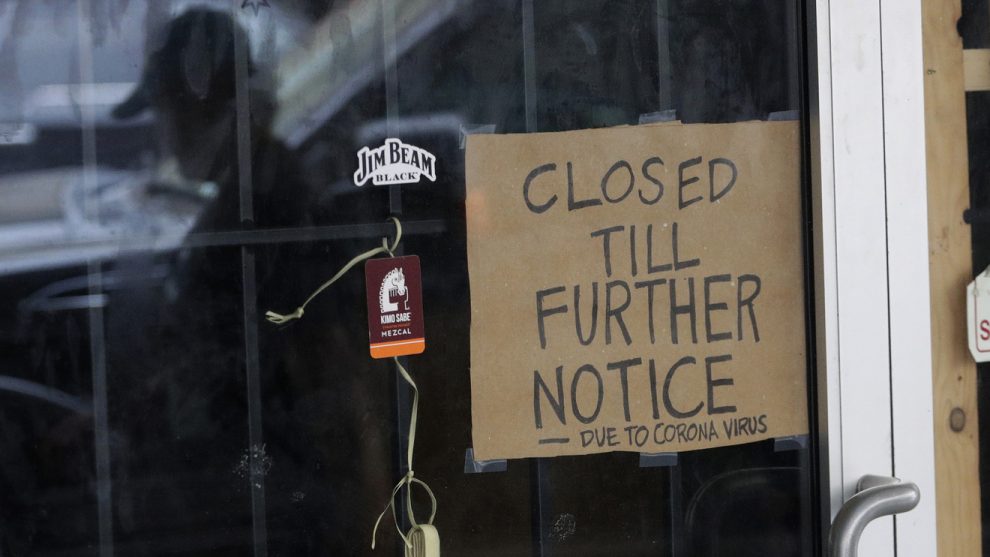
Assuming recently released economic data and projections for the U.S. economy going forward are reasonably accurate, it seems likely that March 2020 will mark the official onset of recession following the longest expansion on record.
Not that the National Bureau of Economic Research’s Business Cycle Dating Committee, the arbiter of cycle peaks and troughs, is in a rush to pass judgment on such matters. It is not in the forecasting business. Its role is to provide historical context.
In the time since its creation in 1978, the BCDC has formally announced the business-cycle peak anywhere from five to 11 months after the fact. Announcements of the trough month also come well after the fact: anywhere from nine to 21 months.
No doubt this time
This time, the lag is apt to be on the shorter side. Real gross domestic product declined by an annualized 4.8% in the first quarter, the result of the forced shutdown of the U.S. economy in mid-March. A huge decline on the order of 30%-40% is expected for the second quarter, after which the economy is expected to bounce back. (The rebound is apt to appear sharp even though the recovery is unlikely to be V-shaped.)
Follow the latest economic news on MarketWatch.
The BCDC will want to have second-quarter GDP in hand —the advance report will be released in late July — before it designates a recession start date. But this kind of economic whiplash argues for a relatively short lag time.
After all, what is there in the way of economic data to argue against a March business cycle peak?
‘A significant decline’
The BCDC eschews the definition of recession as two back-to-back quarters of negative growth. Instead, it prefers “a significant decline in economic activity (that) spreads across the economy and can last from a few months to more than a year.”
Toward that end, it considers an array of monthly indicators in addition to quarterly GDP and gross domestic income, which measures the economy from the income side and often differs from GDP.
Their preferred indicators align with the components of the coincident economic index published by the Conference Board every month and include employment, industrial production and personal income less transfer payments.
The committee also uses private-sector estimates of monthly GDP.
The fourth component in the coincident index, manufacturing and trade sales, “is an obsolete indicator unlikely to play a role” in the committee’s determination of cycle peaks and troughs, BCDC Chairman Robert Hall wrote in an email exchange. “Monthly indicators, such as real personal consumption expenditures, have replaced it.”
Everything collapsed
It would be hard to find any indicator in that group — or outside it, for that matter — that didn’t set a record in April: a record decline, that is.
Industrial production fell 11.2% last month, the largest decline in the 101-year history of the series. Manufacturing production also set a century record, falling 13.7%.
Employment? Almost 45 million people have filed an initial unemployment claim in the last two months. Nonfarm payrolls fell 20.5 million in April the largest decline on record, as the unemployment rate skyrocketed to a post-World-War-II high of 14.7%, from 4.4% in March and a half-century low of 3.5% in February.
While some 18 million of the 23 million unemployed in April said that their unemployment was temporary, Federal Reserve Chair Jerome Powell said it was not unreasonable to expect to see Depression-era unemployment rates of 20% to 25% before a recovery begins in the second half of this year. Many forecasters expect to see double-digit unemployment persist well into next year.
Retail sales plunged by a record 16.4% in April, outdoing the previous record of an 8.3% decline set in March. April housing starts plummeted a record 30.2%.
Real personal consumption expenditures fell 7.6% in the first quarter, the largest decline in 40 years. The second quarter could be even worse for consumer spending, which accounts for more than two-thirds of GDP.
Real personal income less transfer payments fell 2.5% in March when many employees were out of work for the latter half of the month. Imagine what April will look like when the economy was completely shut down.
The bottom line is that it would be hard for the economy not to improve from the second-quarter wash-out. Which may mean that the actual business-cycle trough precedes the BCDC’s announcement of the cycle peak.





